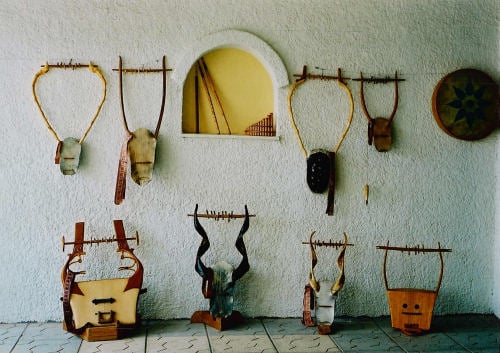A new exhibit featuring exact replicas of ancient Greek musical instruments such as the lyre, homeric phorminx, kithara and aulos will be hosted by the Museum of Ancient Nikopolis near Preveza, in western Greece, until November 20.
The temporary exhibition covers a period ranging from the 8th to the 3rd centuries B.C. and revolves around 17 hand-made musical instruments made by Giorgos Polyzos between 1984 and 2004 for the Athens University student society “Evretirio”.
Speaking with the Athens-Macedonian News Agency (ANA) in his workshop at Tsopela, Pramanta in Epirus, Polyzos said he was first inspired to start making replicas of ancient musical instruments after visiting an exhibition at the Archaeological Museum in Athens in 1979.
“When, in 1983, my friend the poet, writer and journalist Giorgos Maniatis sent me a text on the relationship between politics and music, this served as an occasion to make a faithful copy of a lyre to offer to him in return. He played it and showed it to his students,” Polyzos recounted, remembering how the students had then greeted him by playing the lyre when he later visited Athens, which inspired him to make his second instrument, a pandouris made from tortoise shell.
Recreating the instruments was a painstaking process of collecting information from museum exhibits, archaeological finds, depictions in sculpture and pottery and even the words of ancient myths, he said.
“The Homeric hymn to Hermes says that he made the first lyre… the hymn was a set of instructions, in verse, on how to make a lyre before the invention of writing, obviously repeated as a song. It is a dactylic hexameter, like the Epics,” he said. He explained that the lyre was a very simple organ that anyone with a certain dexterity could make and was chiefly used as a learning instrument, to teach children music.
The seven-stringed phorminx, which later evolved into the kithara, was a valuable instrument played at court, and was made of gold, silver, ebony and ivory, while the “instrument of the poets” was the barbitos, which had longer strings and a deeper tone than the lyre.
Source: ANA-MPA
See all the latest news from Greece and the world at Greekreporter.com. Contact our newsroom to report an update or send your story, photos and videos. Follow GR on Google News and subscribe here to our daily email!




